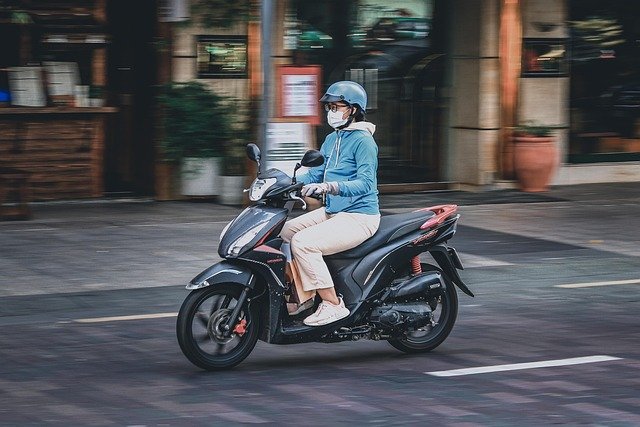Electric Scooters: Revolutionizing Daily Urban Transportation
Discover what’s behind the rise of electric scooters. With convenient rides, eco-friendly benefits, and flexible commuting options, more people are choosing scooters to navigate city streets. Learn how this trend is transforming travel and daily routines across urban areas.

Electric scooters have transformed urban mobility in recent years, offering a convenient and eco-friendly alternative to cars and public transportation. With growing traffic congestion and environmental concerns, these nimble vehicles provide an efficient way to navigate city streets while reducing carbon footprints. Their popularity continues to surge as technology improves, making them more reliable, powerful, and accessible to a wider range of commuters.
Benefits Of Using Electric Scooters For Daily Commutes
Electric scooters offer numerous advantages for everyday transportation needs. Perhaps the most significant benefit is the time saved during rush hour commutes. E-scooters allow riders to bypass traffic congestion, taking advantage of bike lanes and shortcuts unavailable to larger vehicles. This time efficiency can dramatically reduce commute times, particularly for short to medium-distance trips.
The financial advantages are equally compelling. Operating an electric scooter costs significantly less than maintaining a car or even using public transportation regularly. With minimal charging costs—typically just cents per full charge—and virtually no maintenance requirements beyond occasional tire checks and basic upkeep, the long-term savings can be substantial for daily commuters.
Environmental benefits cannot be overlooked. Electric scooters produce zero direct emissions during operation, helping reduce air pollution in urban areas. A typical commuter switching from a gas-powered vehicle to an electric scooter can potentially reduce their carbon footprint by hundreds of pounds of CO2 annually, contributing to cleaner air and healthier communities.
Compare Electric Scooter Features And Performance
When evaluating electric scooters, several key performance metrics deserve attention. Battery range varies significantly between models, from budget options offering 10-15 miles per charge to premium scooters capable of 40+ miles. This range directly impacts a scooter’s practicality for daily use and should align with your typical commuting distance.
Motor power, measured in watts, determines a scooter’s speed capabilities and hill-climbing ability. Entry-level models typically feature 250-350W motors suitable for flat terrain, while more powerful options with 500-1000W motors can handle steep inclines and provide faster acceleration. Maximum speeds generally range from 15-30 mph, though local regulations often limit legal speeds to 15-20 mph on public roads.
Build quality and durability factors significantly affect long-term satisfaction. Features like pneumatic tires versus solid tires impact ride comfort and maintenance requirements. Suspension systems, water resistance ratings, and frame materials (typically aluminum alloys) all contribute to a scooter’s durability and performance in various weather conditions.
How To Choose The Right Electric Scooter For Your Needs
Selecting the ideal electric scooter begins with an honest assessment of your commuting requirements. Consider your typical travel distance, terrain challenges, and whether you’ll need to combine scooter use with public transportation. If your route includes hills or rough surfaces, prioritize models with sufficient motor power and suspension systems.
Portability concerns should factor prominently in your decision, especially if you’ll need to carry your scooter up stairs or onto public transit. Weight varies dramatically between models—from lightweight 25-pound options to robust 70-pound machines. Folding mechanisms differ in convenience and stability, with some designs allowing for one-handed operation while others require more effort but provide greater structural integrity.
Safety features deserve careful consideration. Look for reliable braking systems (ideally a combination of electronic and mechanical brakes), adequate lighting for visibility, and reflective elements. Some premium models now include turn signals, brake lights, and even integrated alarm systems for theft deterrence.
Electric Scooter Models And Specifications Comparison
When comparing available options on the market, it’s helpful to understand how different models stack up against each other in key performance areas.
| Model | Range | Top Speed | Motor Power | Weight | Price Range |
|---|---|---|---|---|---|
| Xiaomi Mi Pro 2 | 28 miles | 15.5 mph | 300W | 31 lbs | $500-600 |
| Segway Ninebot Max | 40 miles | 18.6 mph | 350W | 42 lbs | $800-900 |
| Apollo City | 28 miles | 25 mph | 500W | 39 lbs | $1,000-1,100 |
| Turboant X7 Pro | 30 miles | 20 mph | 350W | 33 lbs | $550-650 |
| Gotrax GXL V2 | 12 miles | 15.5 mph | 250W | 26 lbs | $250-350 |
Prices, rates, or cost estimates mentioned in this article are based on the latest available information but may change over time. Independent research is advised before making financial decisions.
Maintenance And Longevity Considerations
Proper maintenance significantly extends an electric scooter’s lifespan and preserves performance. Regular tire pressure checks prevent premature wear and ensure optimal energy efficiency. For scooters with pneumatic tires, consider using tire sealant to reduce the risk of punctures—a common issue for urban riders.
Battery care represents the most critical maintenance aspect. Most modern electric scooters use lithium-ion batteries that perform best when kept between 20-80% charge and stored at moderate temperatures. Extreme heat or cold can permanently damage battery capacity, while complete discharge cycles should be avoided when possible.
Basic mechanical maintenance includes periodically checking and tightening fasteners, which can loosen from vibration during regular use. Keeping the scooter clean, particularly after riding in wet conditions, prevents premature component wear and electrical issues. Many manufacturers recommend professional servicing annually, though simple maintenance can be performed at home with basic tools.
Legal And Safety Considerations
Electric scooter regulations vary significantly between locations, creating a complex landscape for riders to navigate. Many cities restrict e-scooters to bike lanes and prohibit sidewalk riding, while speed limits typically range from 15-20 mph. Some jurisdictions require helmets, prohibit passengers, or restrict usage to those over 16 or 18 years of age.
Responsible riding practices enhance safety and public perception of electric scooter users. Always yield to pedestrians, signal turns clearly, and maintain safe speeds appropriate to conditions. Wearing visible clothing and using lights even during daylight hours significantly improves safety.
Insurance considerations often go overlooked by new riders. Most standard insurance policies don’t automatically cover electric scooter accidents or theft. Specialized micromobility insurance is increasingly available, offering protection against liability claims, medical expenses, and scooter damage or theft.
Electric scooters represent a practical, economical, and environmentally friendly transportation option for urban dwellers. By carefully evaluating your specific needs, comparing available models, and understanding proper maintenance and legal requirements, you can make an informed decision that enhances your daily commute while reducing your environmental impact.




